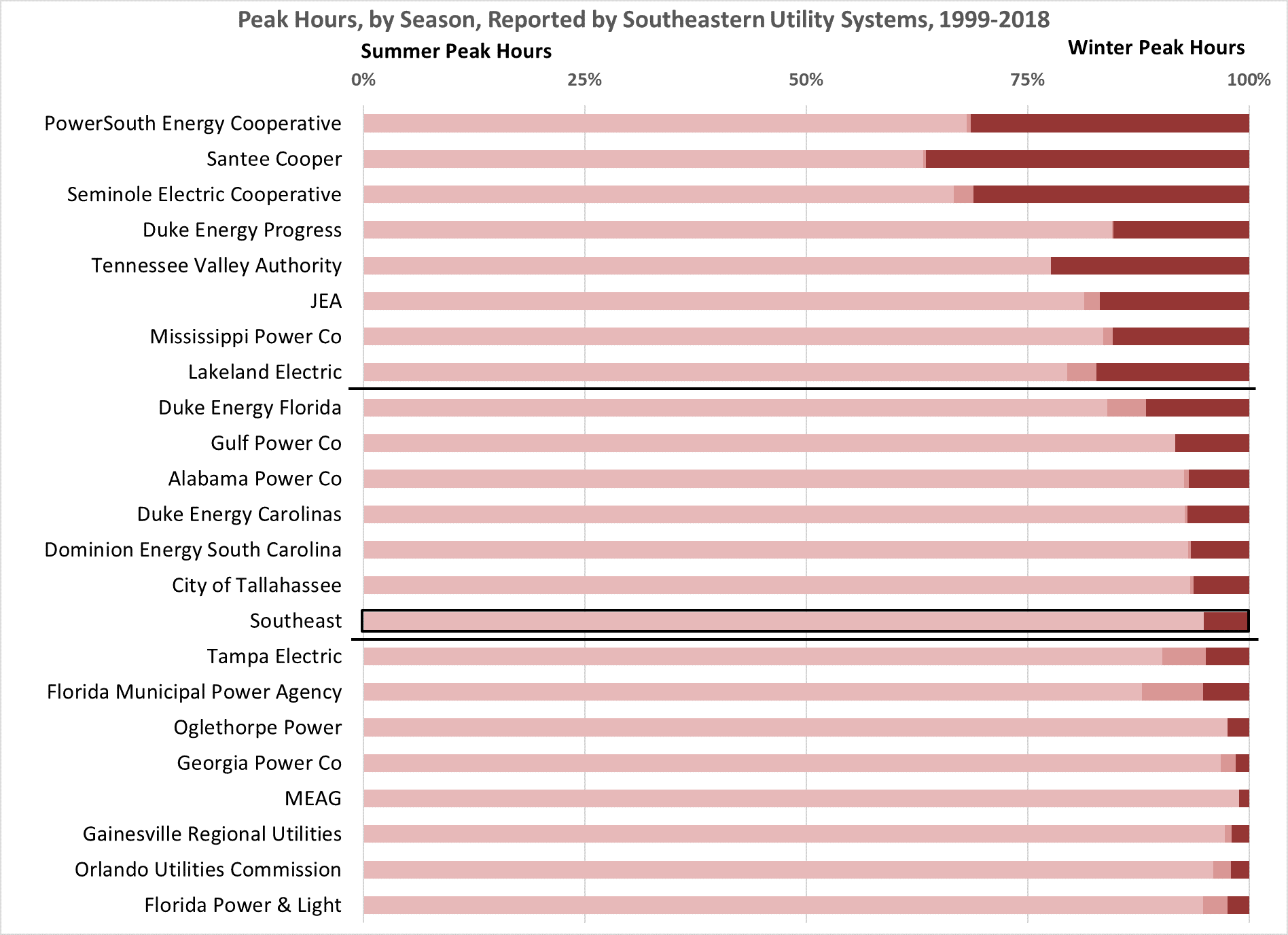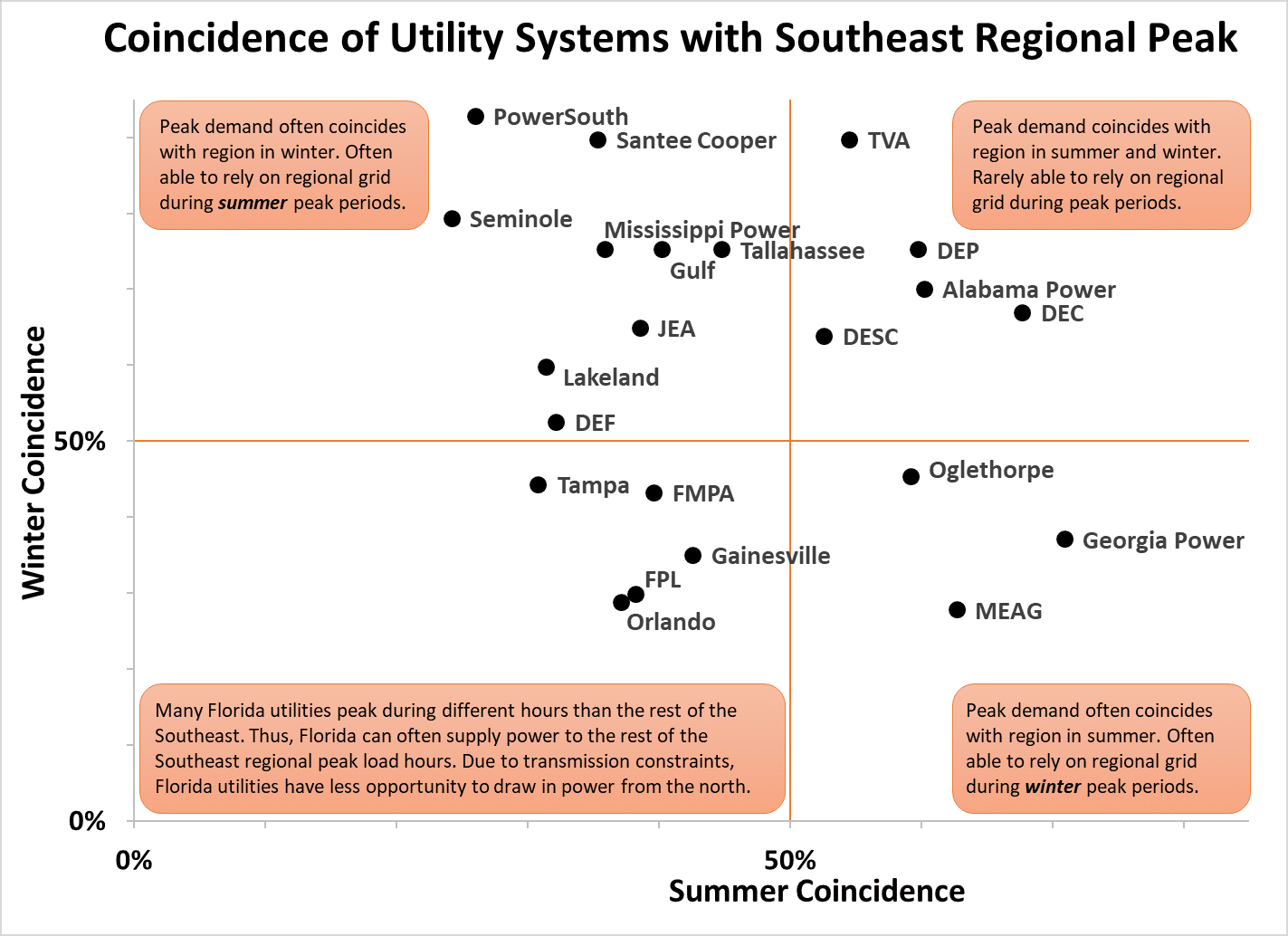Peak load, the hour in which electricity demand is the highest across a utility’s system, drives a utility’s future infrastructure investment plans. When and how high a system peaks in a given year varies year-to-year, usually driven by things like weather and economic conditions. For instance, for 2020 utilities are already seeing potential load impacts of the ongoing COVID-19 pandemic.
In the Southern Alliance for Clean Energy’s (SACE) latest report, Seasonal Electricity Demand in the Southeast we analyzed historical demand data across the Southeast from 1998-2018 to identify key trends in how and when utilities are peaking. These trends were discussed in our webinar on the report on April 7. This blog also provides an overview of three of those trends.
Trend 1: Peak electric load has shifted from growing to declining. Utilities have adjusted forecast methods, but are still overestimating future peak demand, just to a lesser extent.
Why do we care? Overestimation of future peak demand results in utilities building too much generation and transmission infrastructure and overcharges customers.

Trend 2: The Southeast is a dual peaking region, meaning we experience peaks in both summer and winter seasons. This trend is driven by an overall decline in summer peaks, although the majority of our region’s peak hours still occur during the summer. Winter peaks vary more than summer peaks, but there is no evidence that winter peaks are increasing or decreasing.
Why do we care? The season in which a peak occurs can drive what type of resources are deployed to meet that peak. Some generation resources generate more electricity in the summer months, like solar. Some energy efficiency measures, like home heating upgrades, generate more electricity savings in winter months. Utilities with the same level of peak demand in different seasons could, therefore, need different resource plans. It is important that utility resource planning accurately reflects when peaks are most likely to occur.

Some utility planners have suggested that winter reliability risk is increasing and that this increase is associated with an increase in reliance on solar power. Our analysis of the data doesn’t support the suggestion that reliability risk is increasing in the winter. This argument is further undermined by the fact that, although solar power’s generation profile is poorly aligned with some winter peak hours, other resources are available to make up the difference at these times. Therefore, reliability risk in the winter may not be increasing as much as has been implied.
Trend 3: Utilities vary in their degree of coincidence with an overall regional peak. Coincidence is the measurement of the degree to which utilities peak at the same time as each other or at the same time as the region as a whole. Several large utilities’ peak times are closely associated with our regional peak events, whereas others tend to be more seasonal in their association. Peninsular Florida utilities require special consideration due to their patterns of coincidence and the limitations on transmission connections to the rest of the Southeast.
Why do we care? When utilities do not peak at the same time, the opportunity exists for one utility system to share resources with the next to meet peaks. Sharing resources reduces the overall need for resources across the region, and thus reduces costs to customers.

Takeaways and Next Steps
This all sounds very technical and wonky, so why should it matter to electric customers in the Southeast?
Utility forecasting and resource planning are the first steps in the process that will shape the electric grid of the future. And the assumptions utilities make around future peak load will drive how much is invested, and thus how much customers are charged.
Utilities continue to overestimate future peak demand and may be forecasting a shift from one seasonal peak to another despite a lack of support among historical trends. These misguided assumptions could lead utilities to invest in resources that are not the best fit for the grid of the future, and ultimately to overcharging their customers.
SACE’s analysis here opens up some suggestions for further research and analysis on topics such as how to connect these findings to best practices for deployment of energy efficiency and demand response, and how different rate structures either augment or mitigate different types of peaks.
Research into these issues should be ongoing. We look forward to continuing to explore these issues. Please stay tuned for more!



